Chamberlain Group The 6761 Gate Operator Ebox Assembly User Manual
Chamberlain Group Inc, The Gate Operator Ebox Assembly
Contents
- 1. User Manual SL3000 English Manual for FCC 01-37920 Pt1a
- 2. User Manual SL3000 English Manual for FCC 01-37920 Pt1
- 3. User Manual SL3000 English Manual for FCC 01-37920 Pt2
User Manual SL3000 English Manual for FCC 01-37920 Pt2
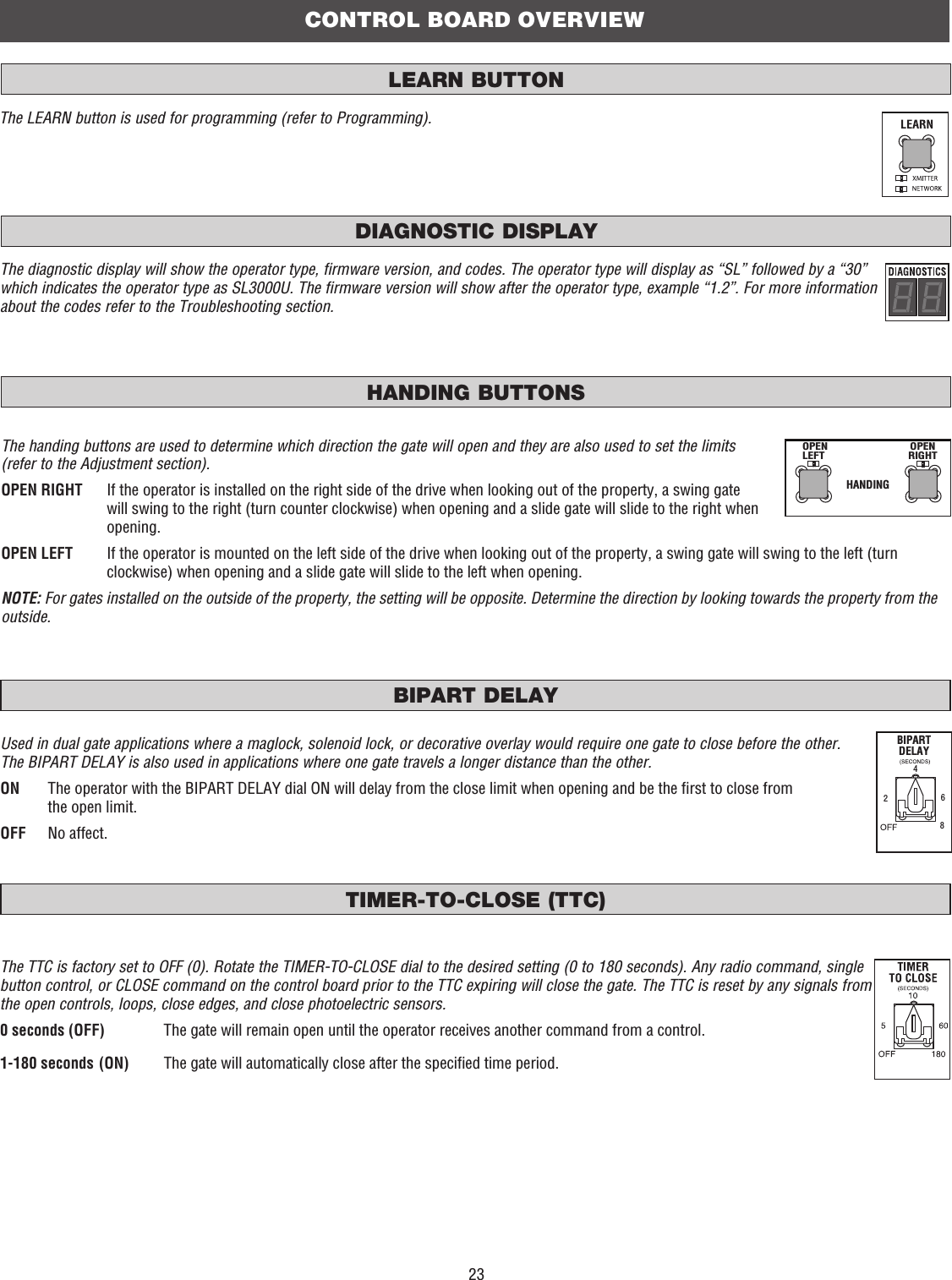
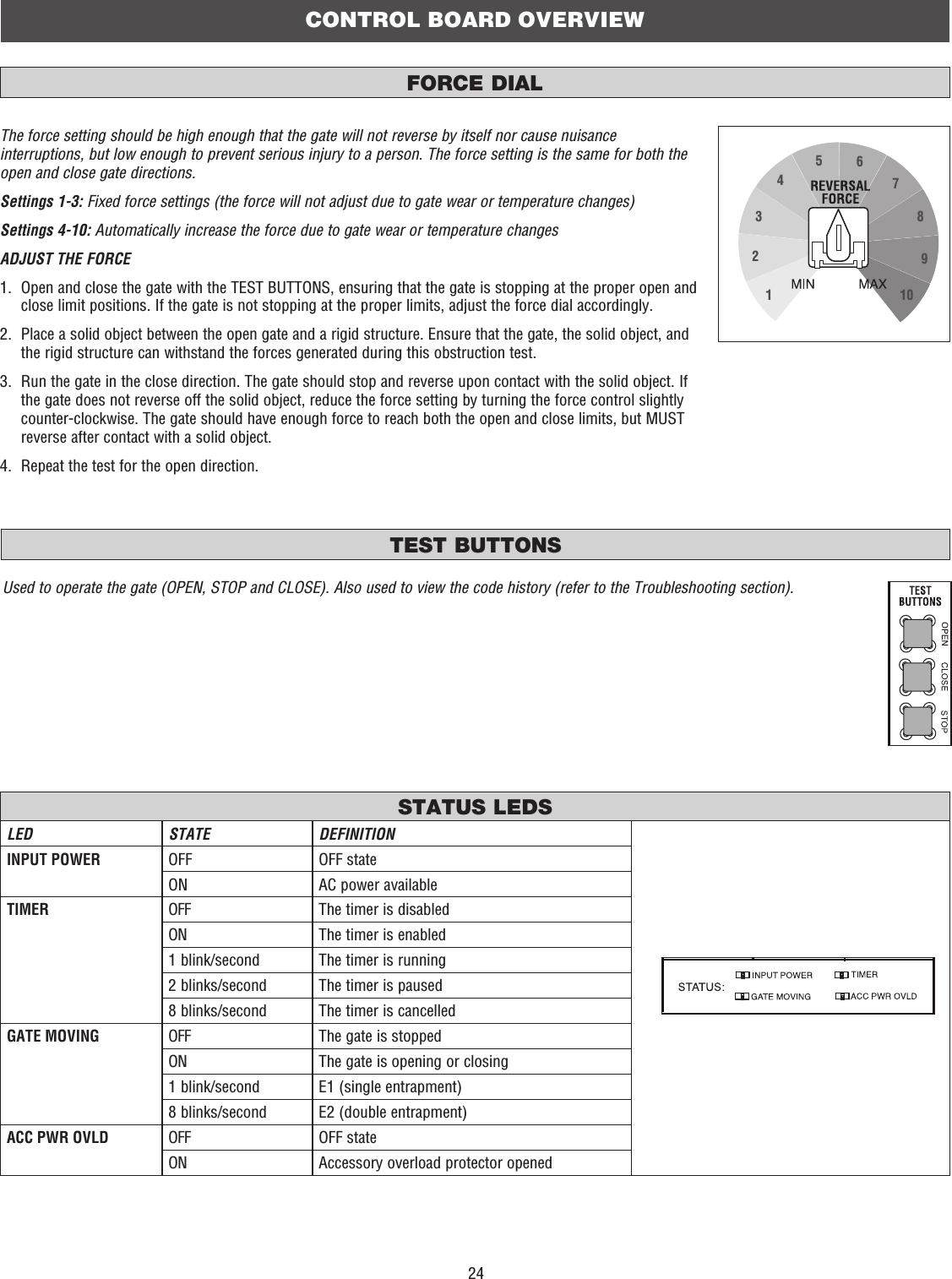
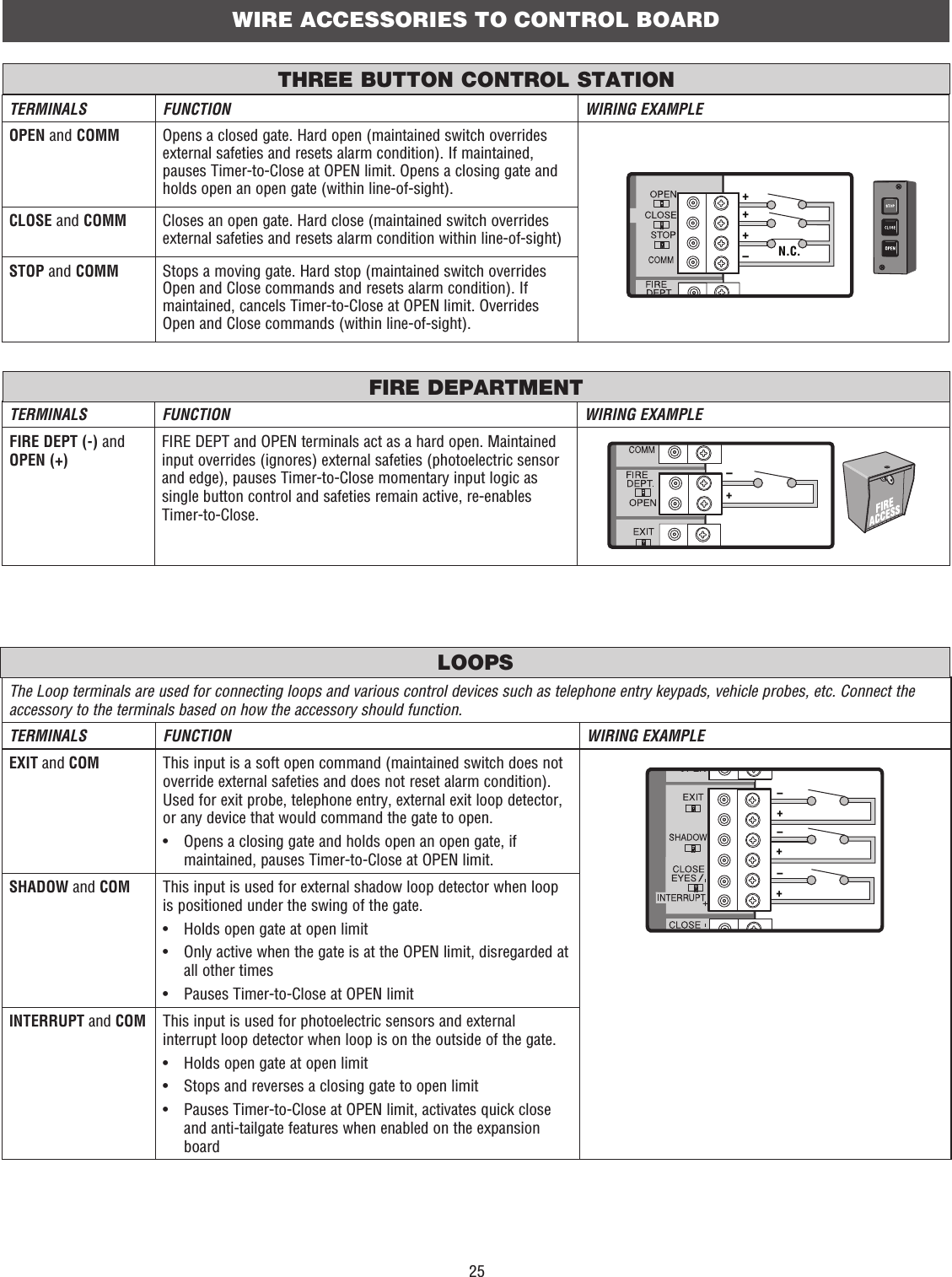
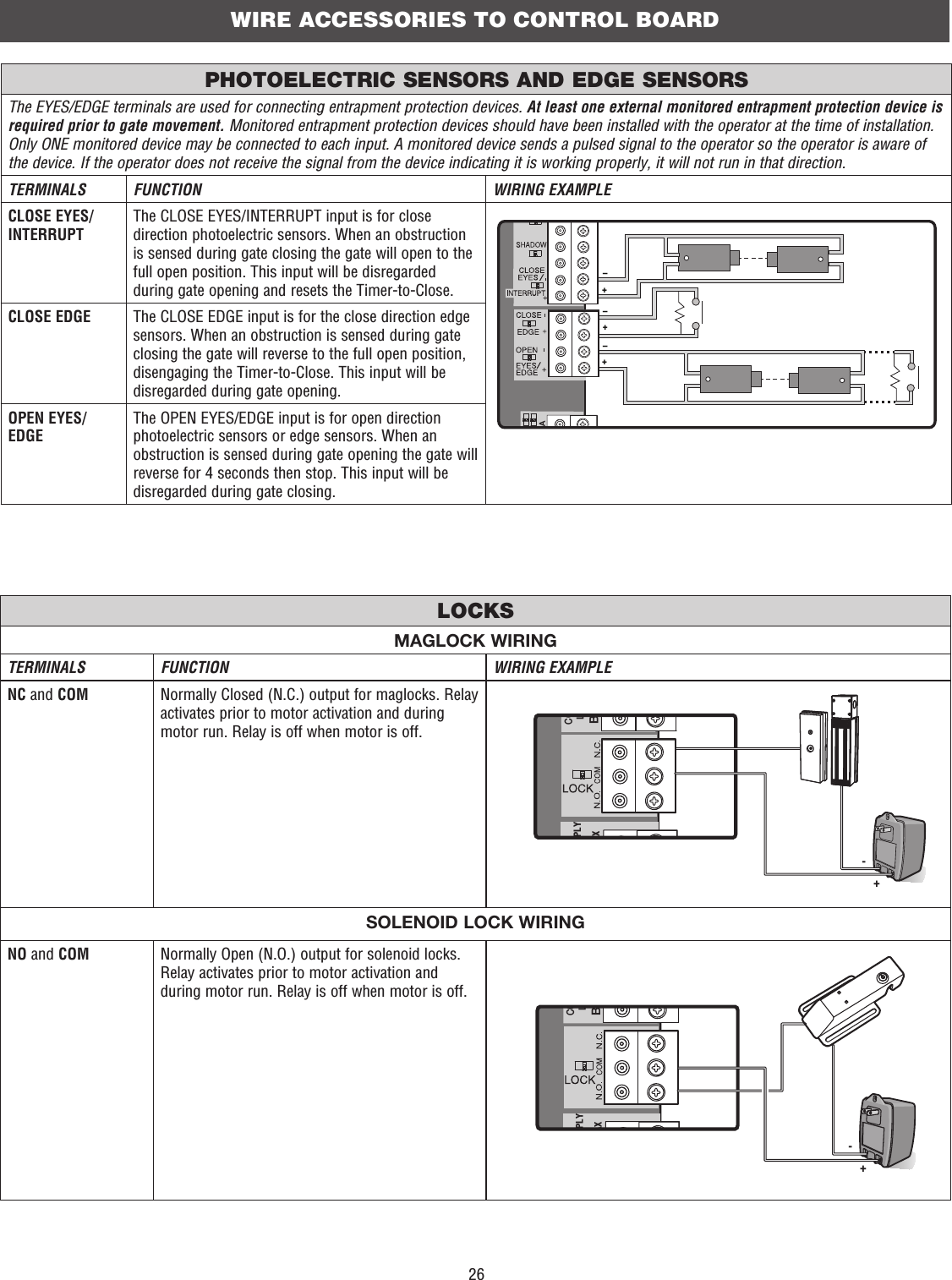
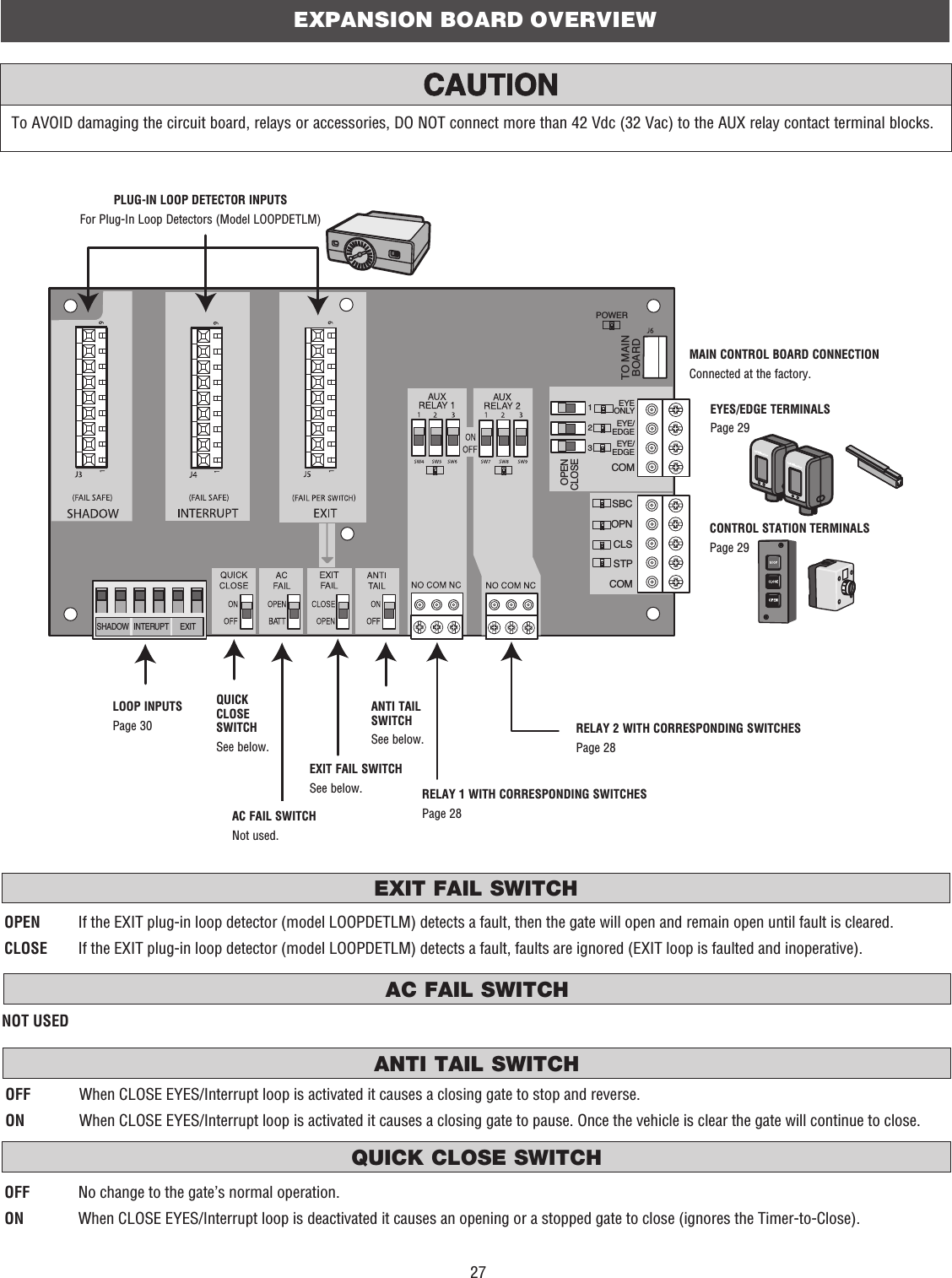
![28EXPANSION BOARD OVERVIEWAUXILIARY RELAY 1 AND 2RELAY SETTING SWITCH SETTINGS AUX RELAY 1 AUX RELAY 2123Off (no feature selected)OFF OFF OFF Relay always off.Open Limit Switch OFF OFF ON Energizes at open limit. Use with SAMS (Sequenced Access Management System, jointly with barrier gate).Close Limit Switch OFF ON OFF Energizes when not at close limit. For an additional audible or visual display, connect an external light (low voltage).Gate Motion OFF ON ON Energizes when motor is on (gate in motion). For an additional audible or visual display, connect an external buzzer or light (low voltage).Pre-Motion Delay ON OFF OFF Energizes 3 seconds before gate motion and remains energized during gate motion. The onboard alarm will sound. For an additional audible or visual display, connect an external buzzer or light (low voltage).Energizes 3 seconds before gate motion and remains energized during gate motion. For an additional audible or visual display, connect an external buzzer or light (low voltage).Power ON ON OFF Not used.Tamper ON OFF ON Energizes if gate is manually tampered with by being pushed off of close limit. For an additional audible or visual display, connect an external buzzer or light (low voltage).Cycle Quantity Feedback*ON ON ON The 1, 2, and 3 LEDs will blink out the cycle count (cycle count is stored on the control board). See below.Not used.SHADOW INTERUPT EXITSBCOPNCLSSTPCOMCOMOPENCLOSEAUX RELAY 1 AUX RELAY 2AUX Relay 2 N.C.ComAUX Relay 2 N.O.AUX Relay 1 N.C.ComAUX Relay 1 N.O.+–Traffic LightClass 2 Power Source(42 Vdc [34 Vac], 5 A maximum)Normally Open (N.O.) and Normally Closed (N.C.) relay contacts to control external devices, for connection of Class 2, low voltage (42 Vdc [34 Vac] max 5 Amps) power sources only. Function of relay contact activation determined by switch settings.CYCLE COUNT* First, note the current Aux Relay switch positions. To determine the actual cycles that the gate operator has run (in thousands), set all three Aux Relay switches to the ON setting for Aux Relay 1. The Expansion Board’s 1, 2, and 3 LEDs will blink out the cycle count, with 1 LED blinking 1000’s, 2 LED blinking 10,000’s, 3 LED blinking 100,000’s, and simultaneously all three LED’s blink 1,000,000’s (e.g. 1 LED blinks 3 times, 2 LED blinks 6 times, and 3 LED blinks once. Cycle count is 163,000.). Cycle count displayed is between 1,000 and 9,999,000 cycles. After servicing, set Aux Relay switches back to their appropriate positions. Cycle count cannot be reset or changed. If under 1,000 cycles the 1, 2, and 3 LEDs will turn on for 10 seconds, then turn off.NOTE: The expansion board will flash the cycle count 3 times then all the LEDs will turn on solid for 10 seconds then turn off.AUXILIARY RELAY WIRING EXAMPLERED/GREEN LIGHT FUNCTIONALITYRed light wired to AUX RELAY 1. Green light wired to AUX RELAY 2.GATE STATE AUX RELAY 1 SWITCHES AUX RELAY 2 SWITCHES1 OFF 2 OFF 3 OFF 1 ON 2 ON 3 ONClosed Red light OFF* Green light OFFOpening Red light ON/Flash Green light OFFOpen Red light OFF Green light ONClosing Red light ON/Flash Green light OFFDefined Mid Stop n/a n/aUndefined Mid Stop Red light ON Green light OFFTimer more than 5 seconds Red light OFF Green light ONTimer less than 5 seconds Red light ON/Flash Green light OFF* For red light ON when gate is closed, set switch 1 on AUX RELAY 1 to ON](https://usermanual.wiki/Chamberlain-Group-The/6761.User-Manual-SL3000-English-Manual-for-FCC-01-37920-Pt2/User-Guide-2747023-Page-6.png)
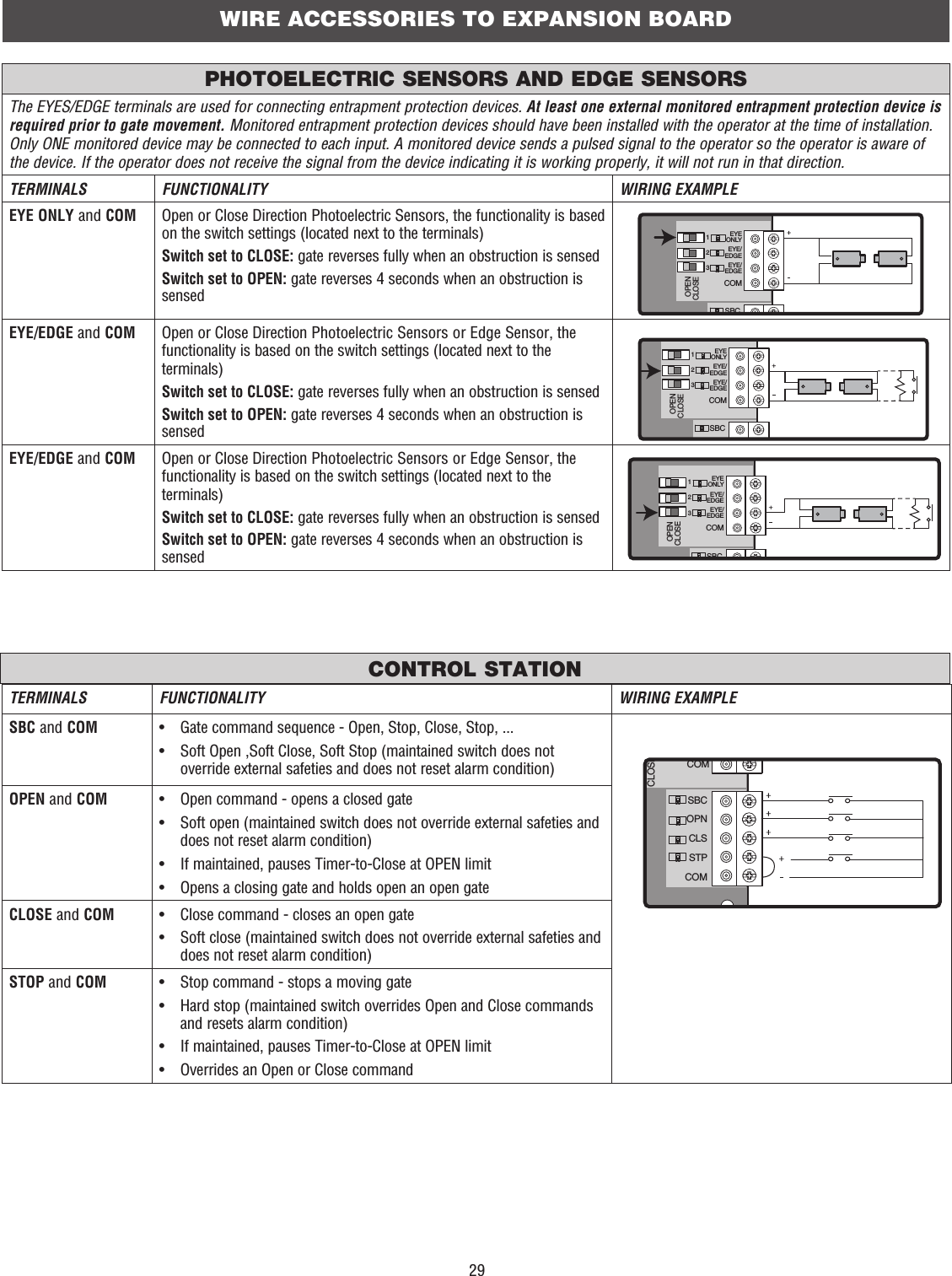
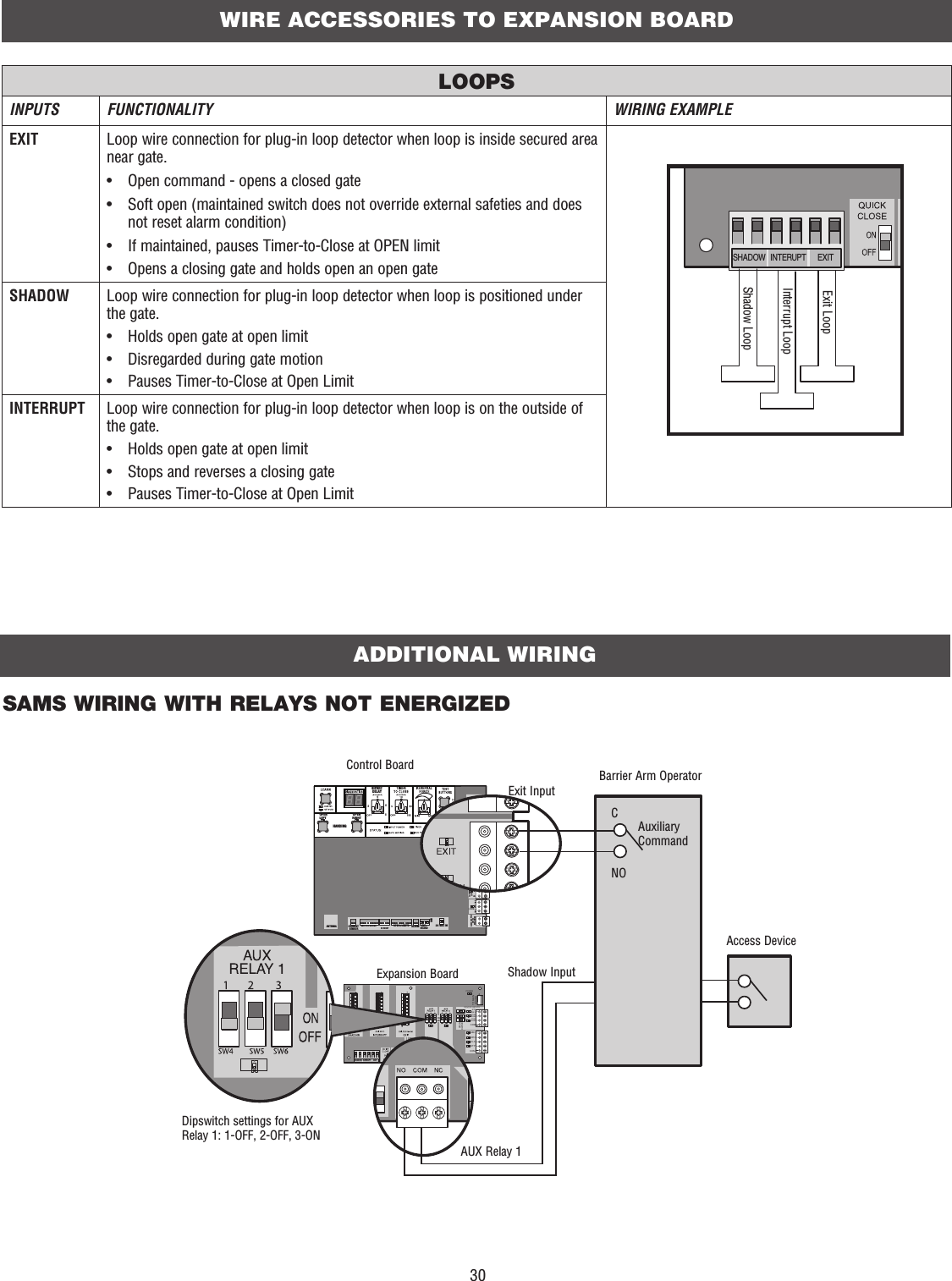
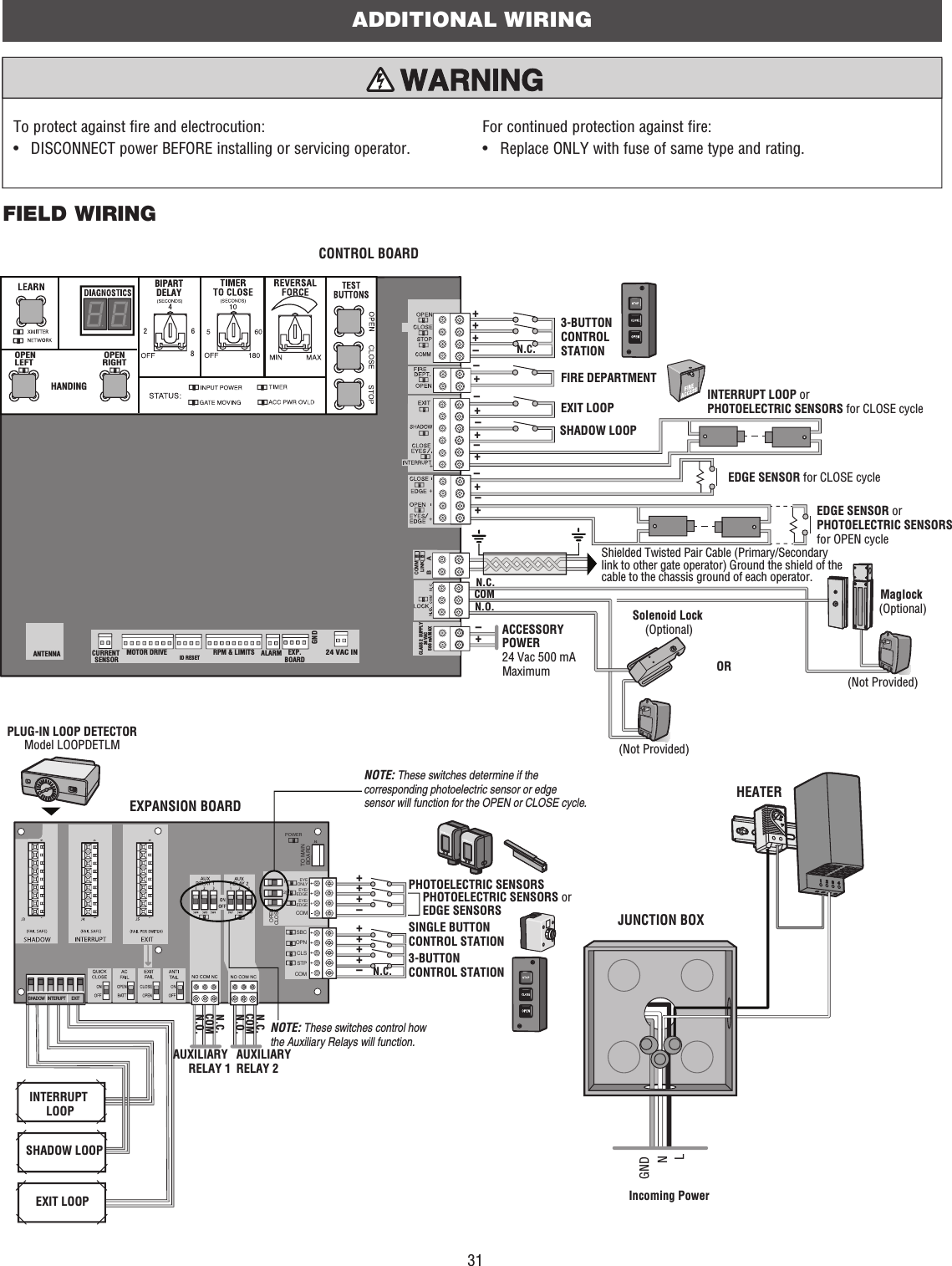
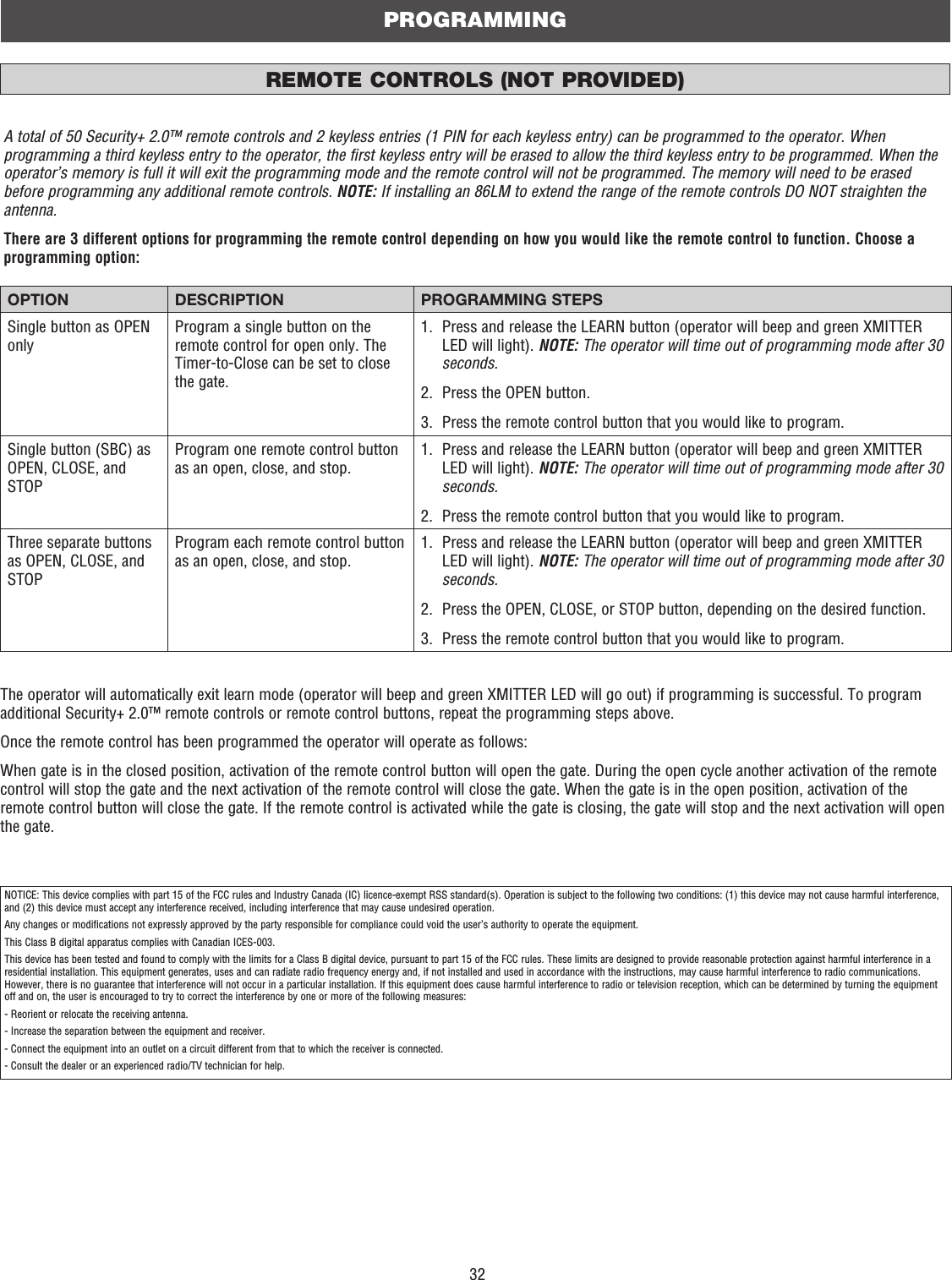
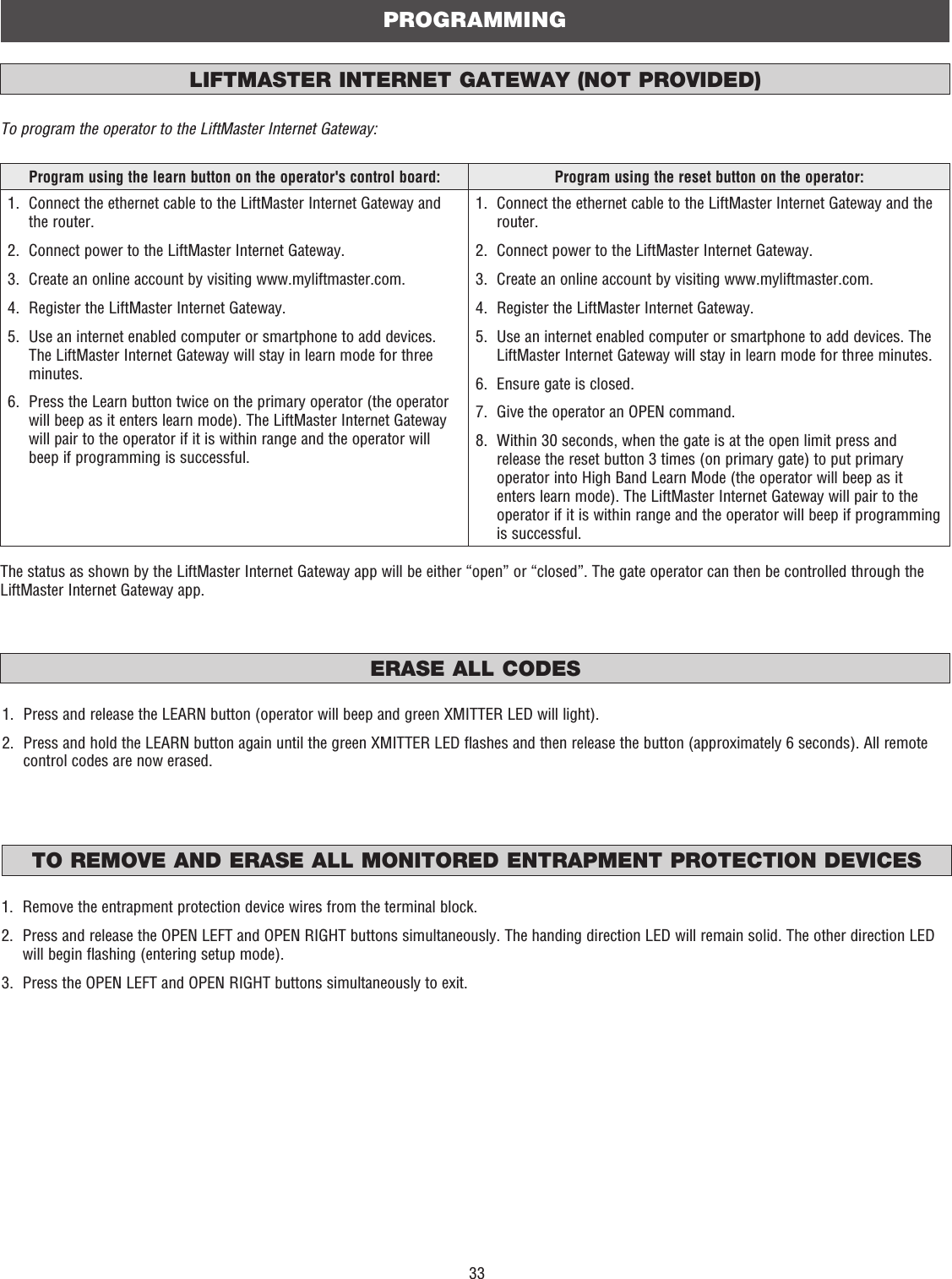
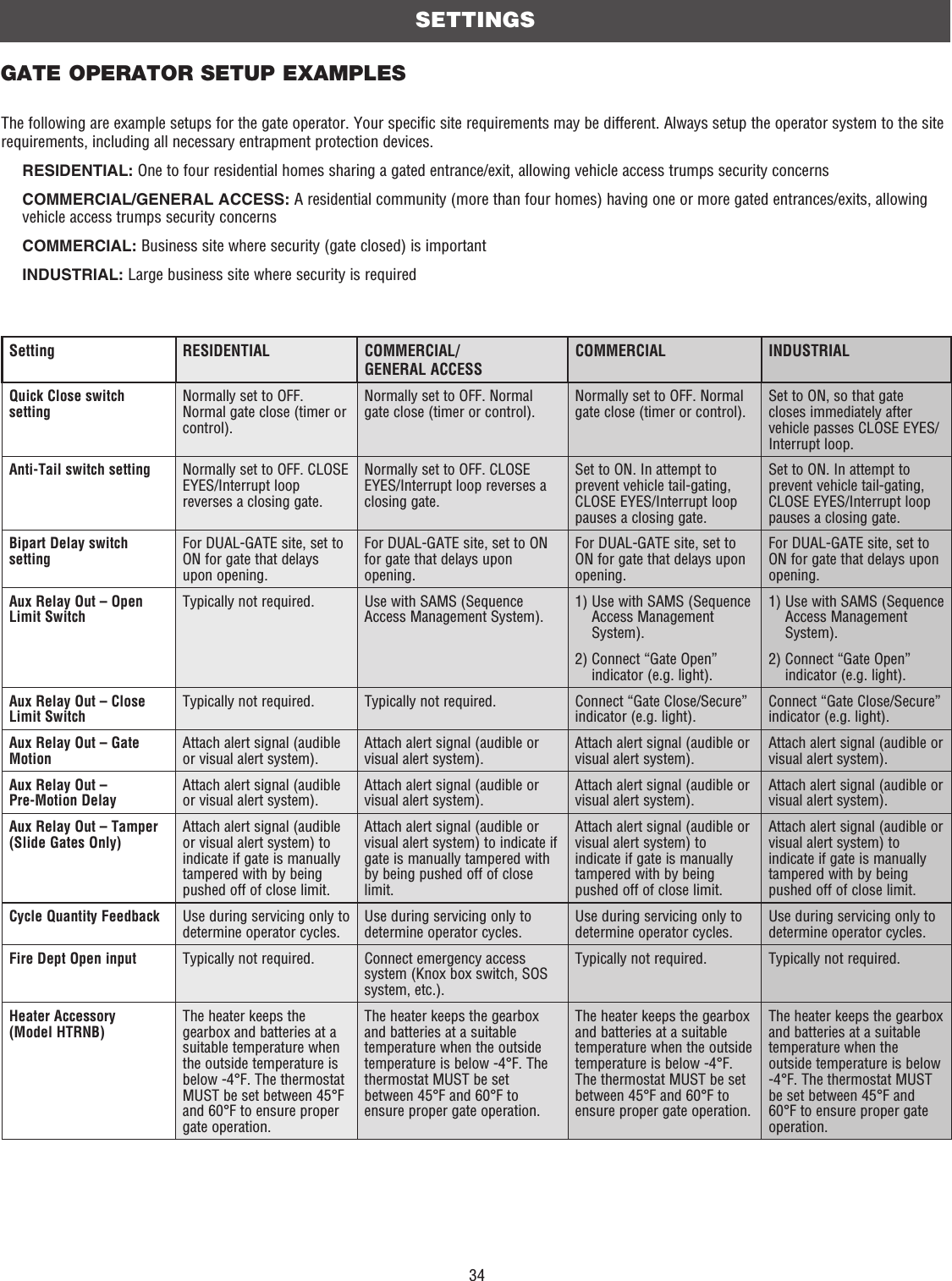
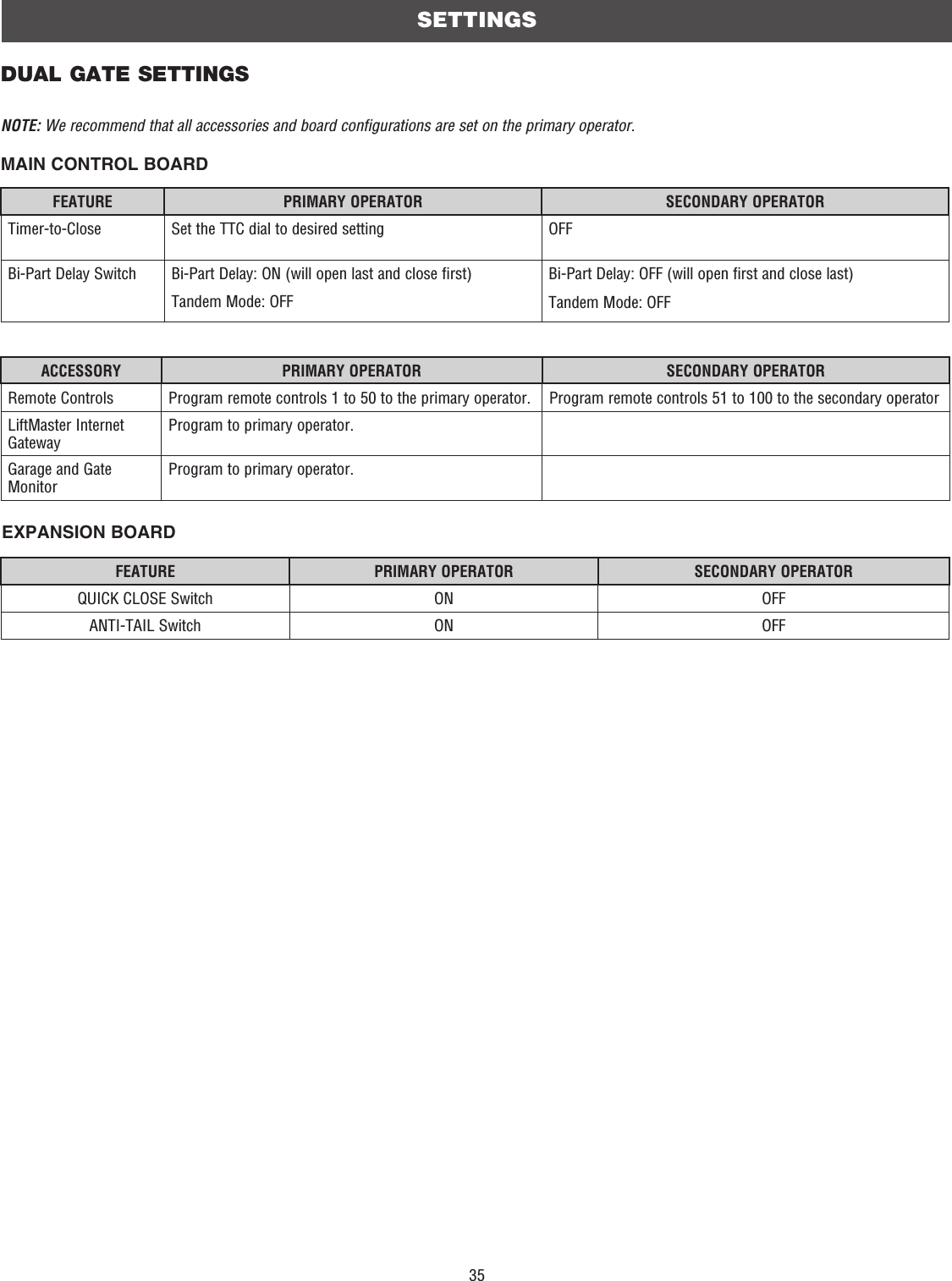
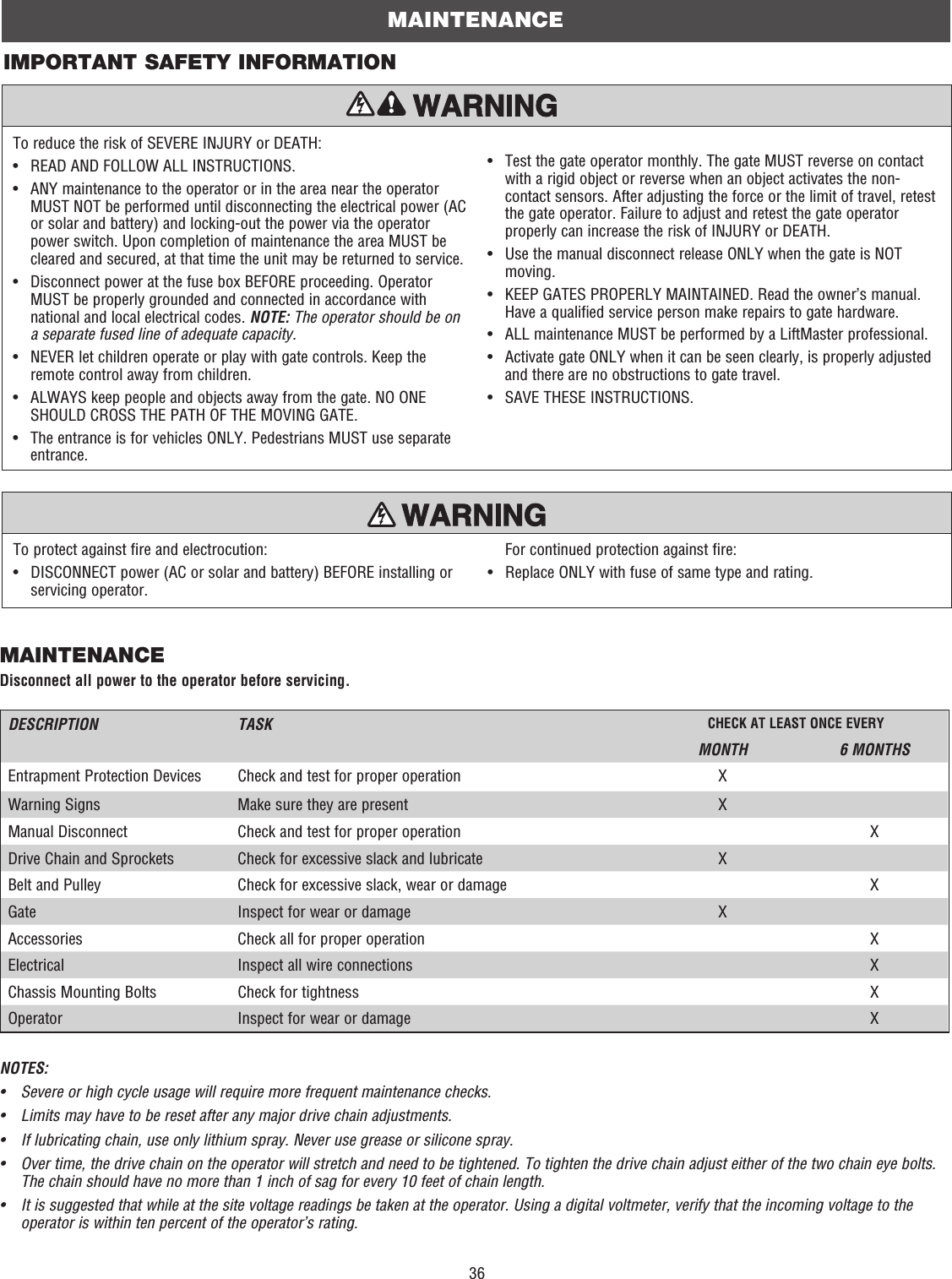
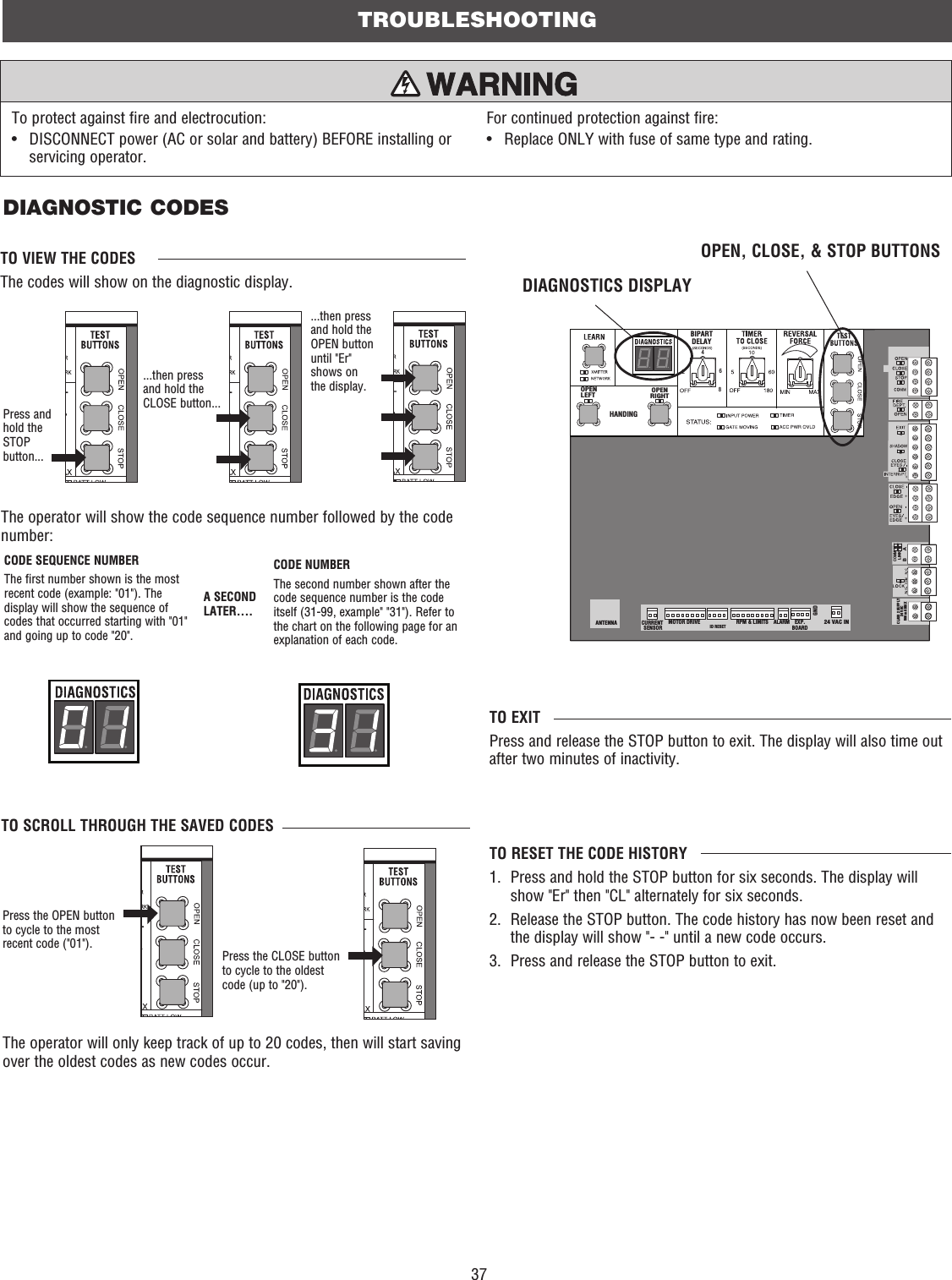
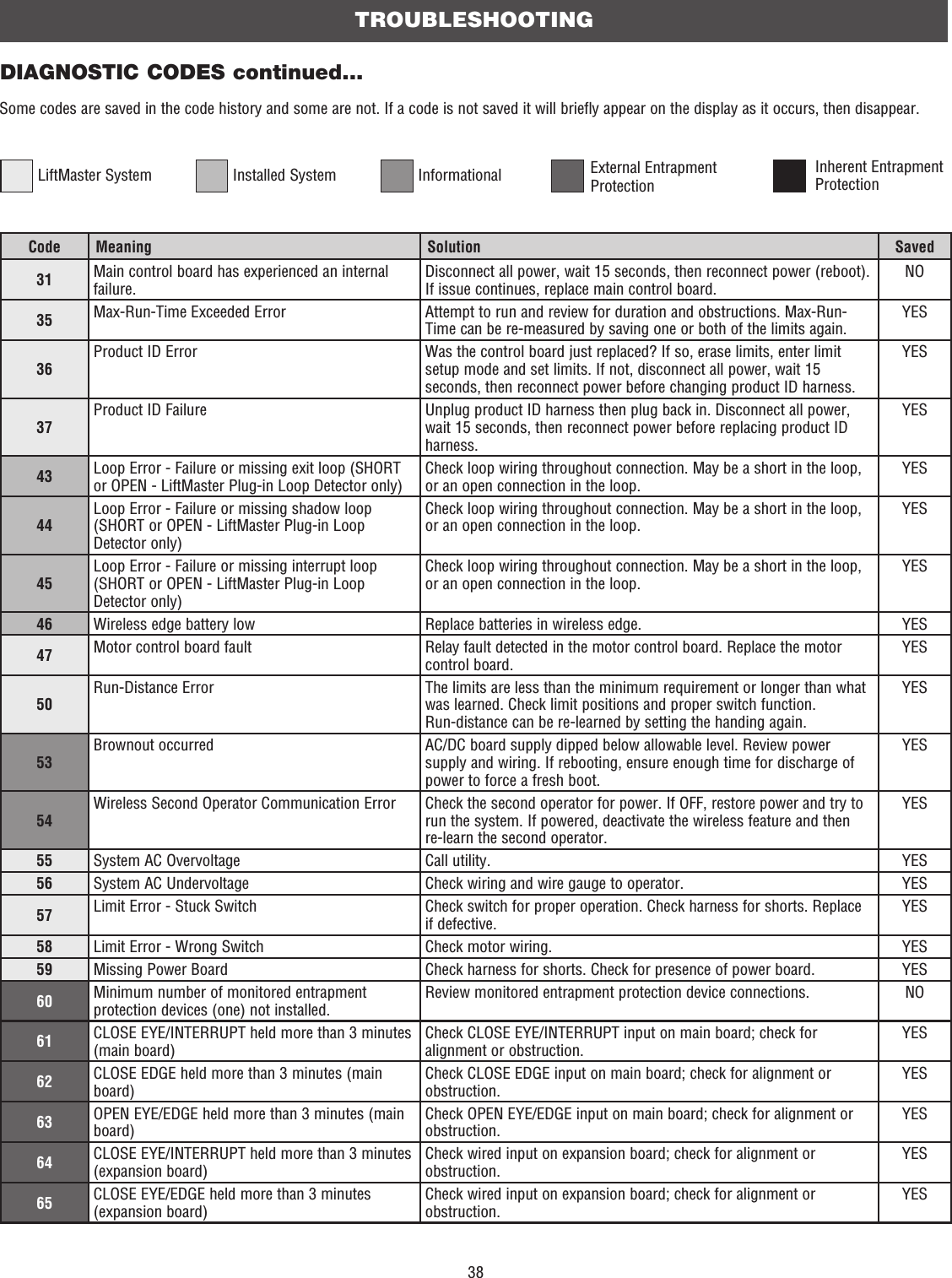
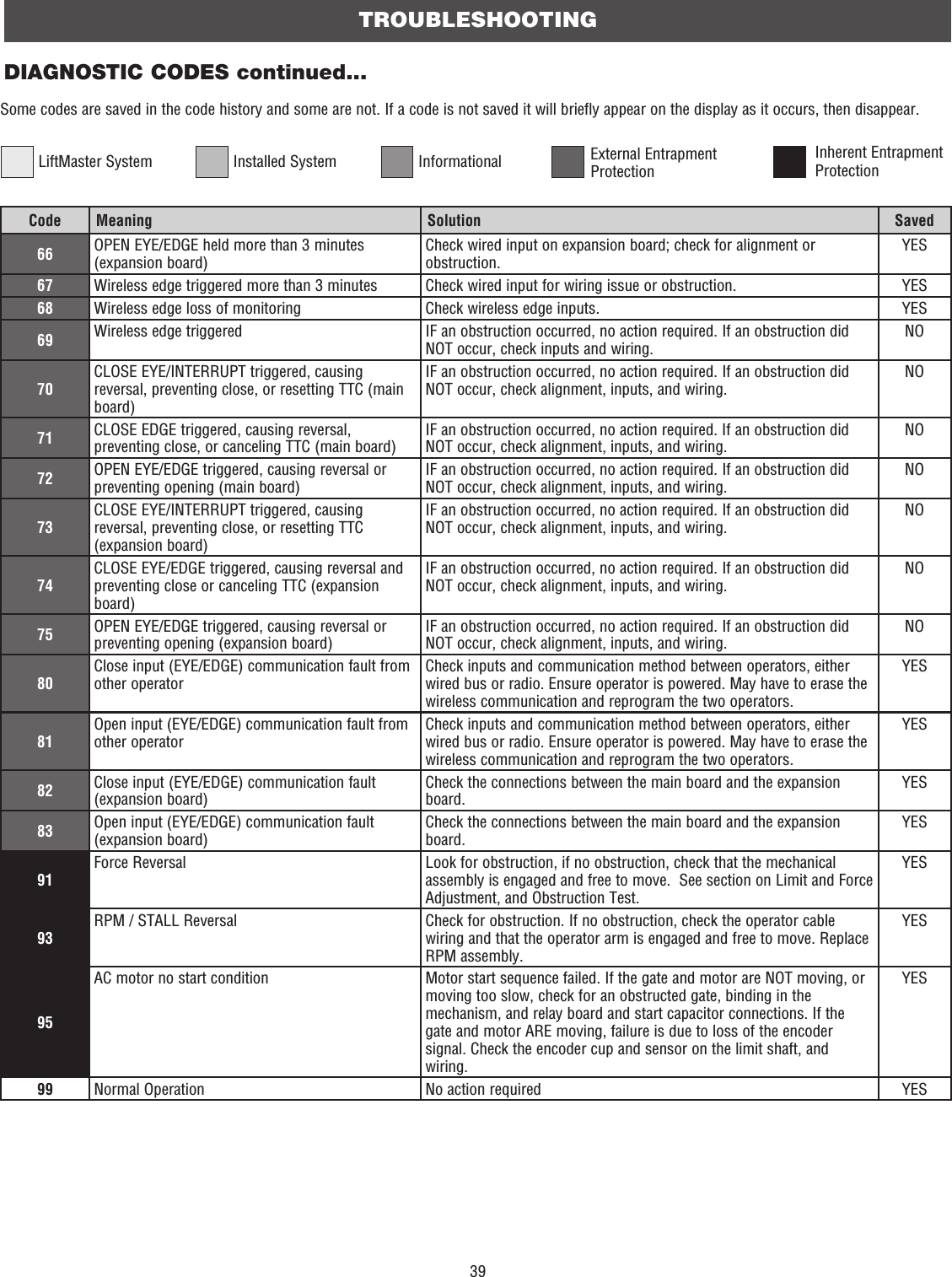
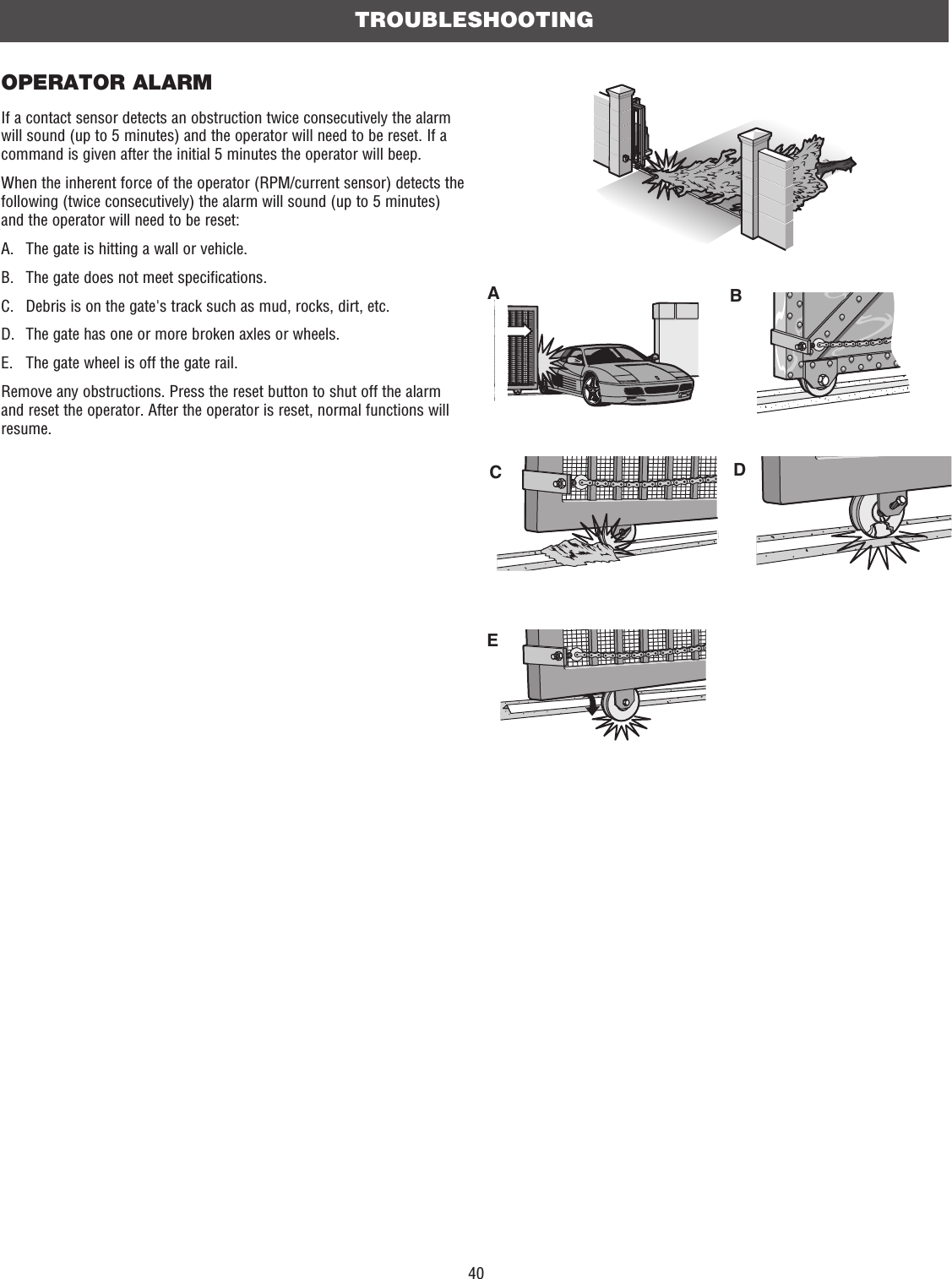
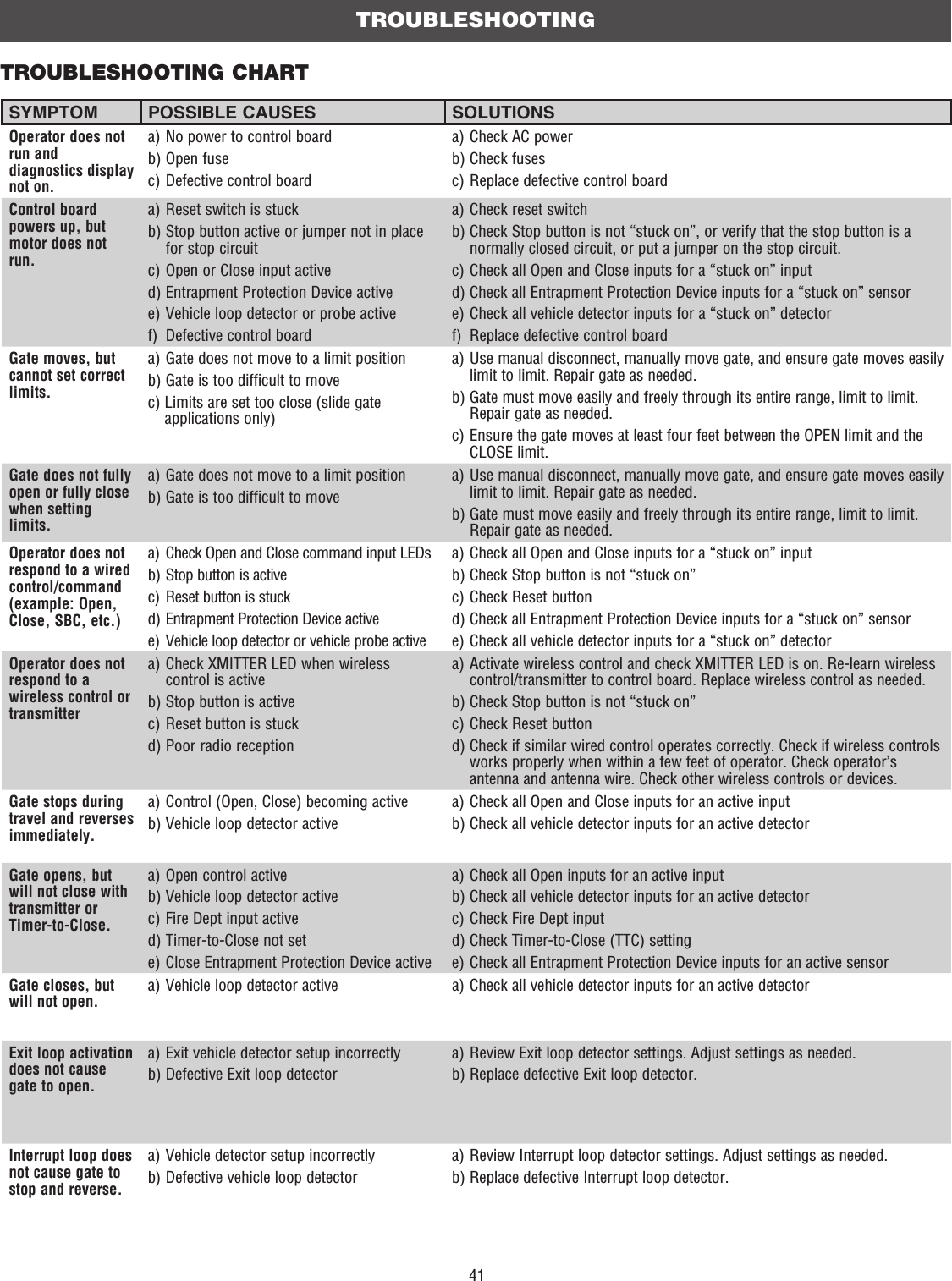
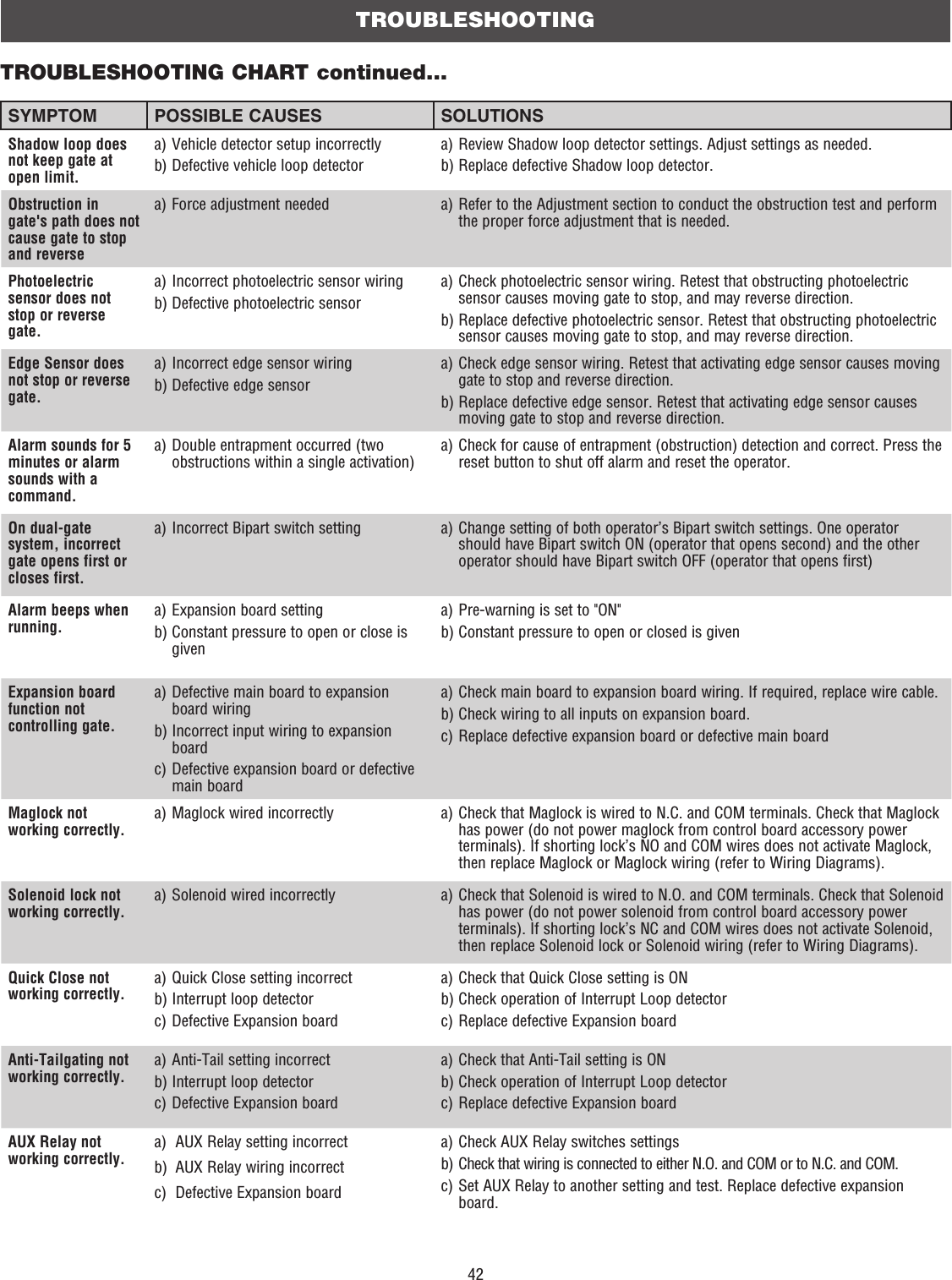
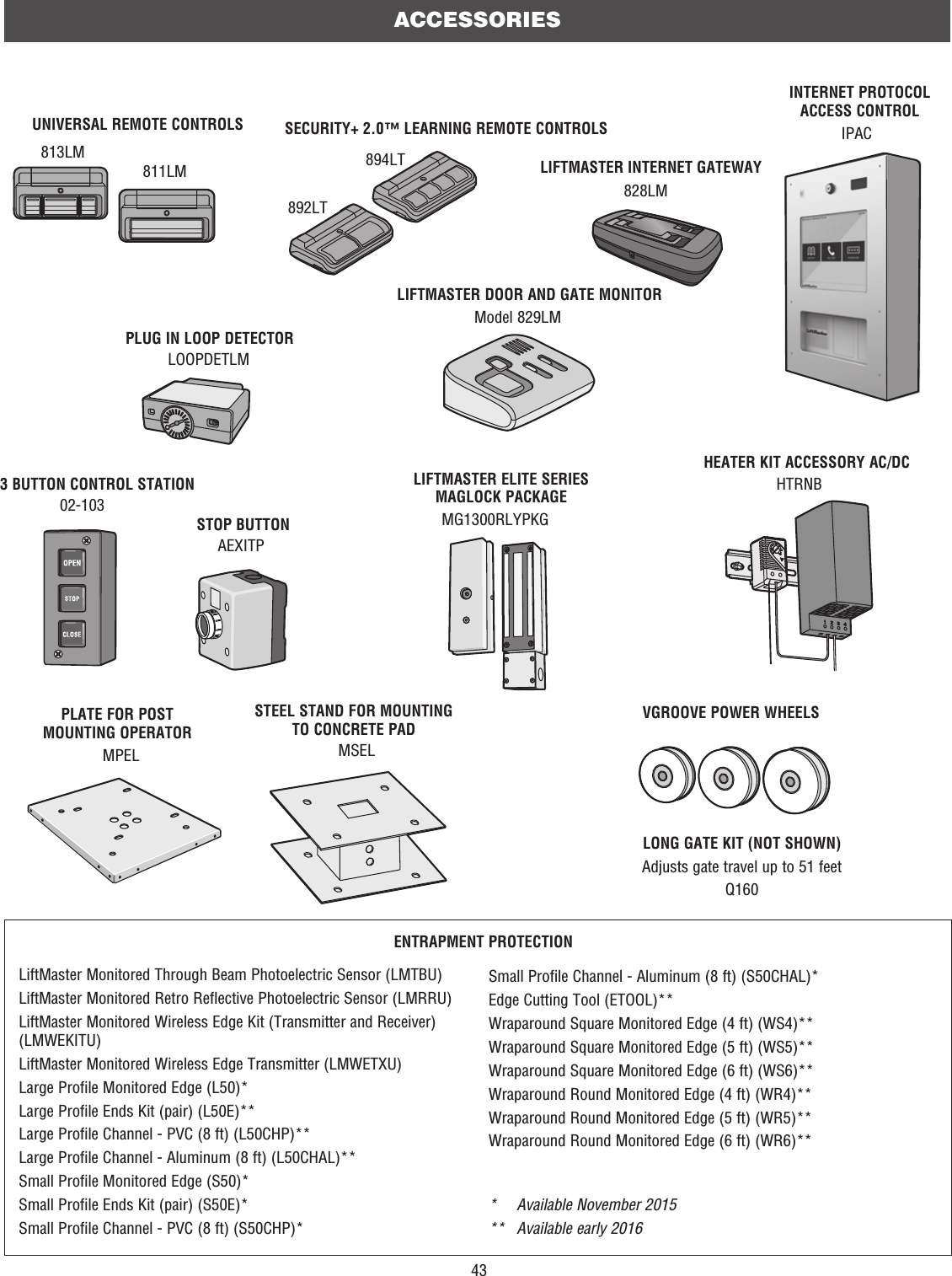
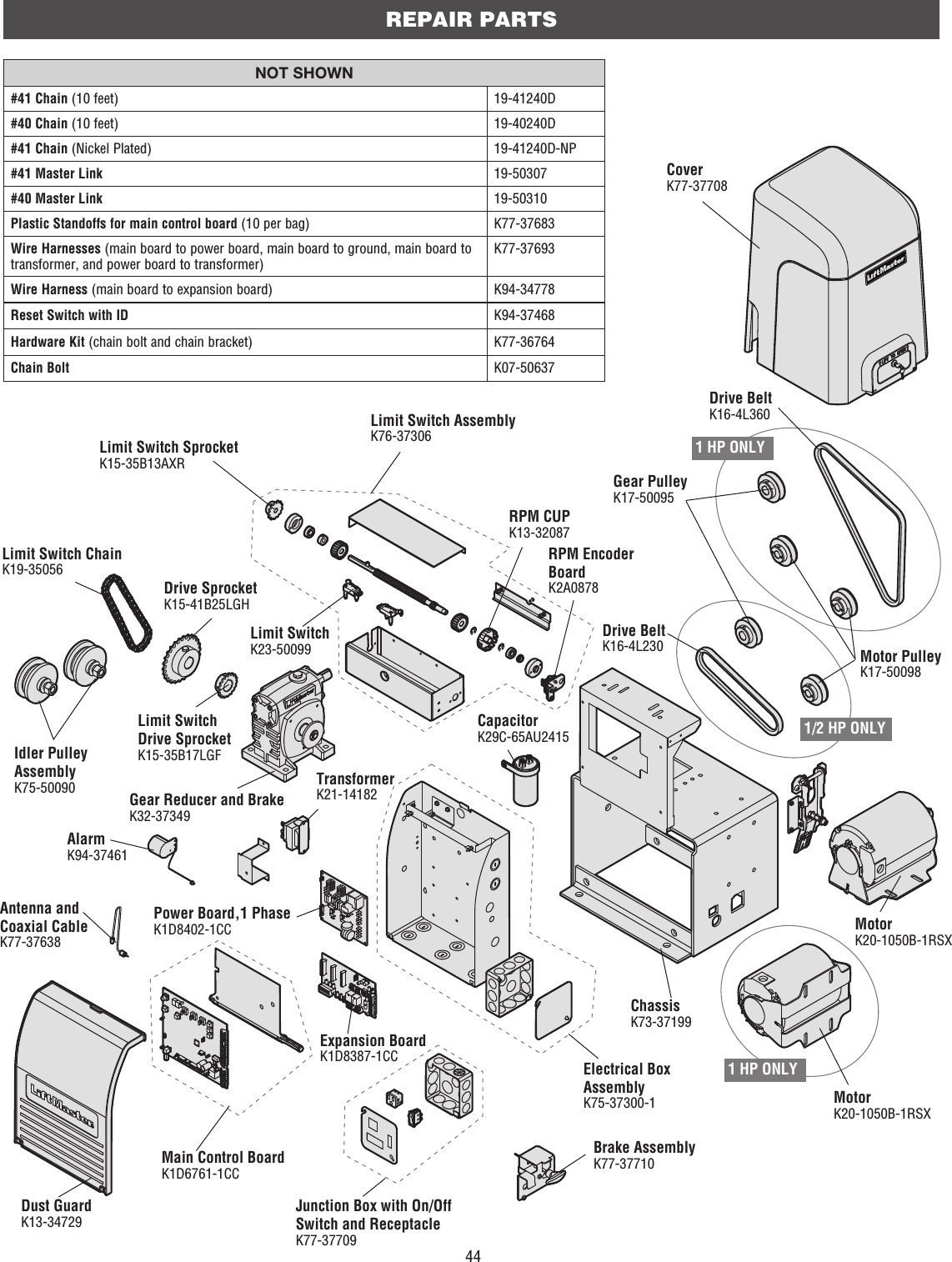
![457 YEAR RESIDENTIAL / 5 YEAR COMMERCIAL LIMITED WARRANTYLiftMaster (“Seller”) warrants to the first purchaser of this product, for the structure in which this product is originally installed, that it is free from defect in materials and/or workmanship for a period of 7 year residential/ 5 year commercial from the date of purchase [and that the SL3000U is free from defect in materials and/or workmanship for a period of 7 year residential/ 5 year commercial from the date of purchase]. The proper operation of this product is dependent on your compliance with the instructions regarding installation, operation, maintenance and testing. Failure to comply strictly with those instructions will void this limited warranty in its entirety.If, during the limited warranty period, this product appears to contain a defect covered by this limited warranty, call 1-800-528-2806, toll free, before dismantling this product. Then send this product, pre-paid and insured, to our service center for warranty repair. You will be advised of shipping instructions when you call. Please include a brief description of the problem and a dated proof-of-purchase receipt with any product returned for warranty repair. Products returned to Seller for warranty repair, which upon receipt by Seller are confirmed to be defective and covered by this limited warranty, will be repaired or replaced (at Seller’s sole option) at no cost to you and returned pre-paid. Defective parts will be repaired or replaced with new or factory-rebuilt parts at Seller’s sole option.ALL IMPLIED WARRANTIES FOR THE PRODUCT, INCLUDING BUT NOT LIMITED TO ANY IMPLIED WARRANTIES OF MERCHANTABILITY AND FITNESS FOR A PARTICULAR PURPOSE, ARE LIMITED IN DURATION TO THE 7 YEAR RESIDENTIAL/ 5 YEAR COMMERCIAL LIMITED WARRANTY PERIOD SET FORTH ABOVE [EXCEPT THE IMPLIED WARRANTIES WITH RESPECT TO THE SL3000U, WHICH ARE LIMITED IN DURATION TO THE 7 YEAR RESIDENTIAL/ 5 YEAR COMMERCIAL LIMITED WARRANTY PERIOD FOR THE SL3000U], AND NO IMPLIED WARRANTIES WILL EXIST OR APPLY AFTER SUCH PERIOD. Some states do not allow limitations on how long an implied warranty lasts, so the above limitation may not apply to you. THIS LIMITED WARRANTY DOES NOT COVER NON-DEFECT DAMAGE, DAMAGE CAUSED BY IMPROPER INSTALLATION, OPERATION OR CARE (INCLUDING, BUT NOT LIMITED TO ABUSE, MISUSE, FAILURE TO PROVIDE REASONABLE AND NECESSARY MAINTENANCE, UNAUTHORIZED REPAIRS OR ANY ALTERATIONS TO THIS PRODUCT), LABOR CHARGES FOR REINSTALLING A REPAIRED OR REPLACED UNIT, OR REPLACEMENT OF BATTERIES.THIS LIMITED WARRANTY DOES NOT COVER ANY PROBLEMS WITH, OR RELATING TO, THE GATE OR GATE HARDWARE, INCLUDING BUT NOT LIMITED TO THE GATE SPRINGS, GATE ROLLERS, GATE ALIGNMENT OR HINGES. THIS LIMITED WARRANTY ALSO DOES NOT COVER ANY PROBLEMS CAUSED BY INTERFERENCE. ANY SERVICE CALL THAT DETERMINES THE PROBLEM HAS BEEN CAUSED BY ANY OF THESE ITEMS COULD RESULT IN A FEE TO YOU. UNDER NO CIRCUMSTANCES SHALL SELLER BE LIABLE FOR CONSEQUENTIAL, INCIDENTAL OR SPECIAL DAMAGES ARISING IN CONNECTION WITH USE, OR INABILITY TO USE, THIS PRODUCT. IN NO EVENT SHALL SELLER’S LIABILITY FOR BREACH OF WARRANTY, BREACH OF CONTRACT, NEGLIGENCE OR STRICT LIABILITY EXCEED THE COST OF THE PRODUCT COVERED HEREBY. NO PERSON IS AUTHORIZED TO ASSUME FOR US ANY OTHER LIABILITY IN CONNECTION WITH THE SALE OF THIS PRODUCT.Some states do not allow the exclusion or limitation of consequential, incidental or special damages, so the above limitation or exclusion may not apply to you. This limited warranty gives you specific legal rights, and you may also have other rights which vary from state to state.WARRANTY](https://usermanual.wiki/Chamberlain-Group-The/6761.User-Manual-SL3000-English-Manual-for-FCC-01-37920-Pt2/User-Guide-2747023-Page-23.png)
